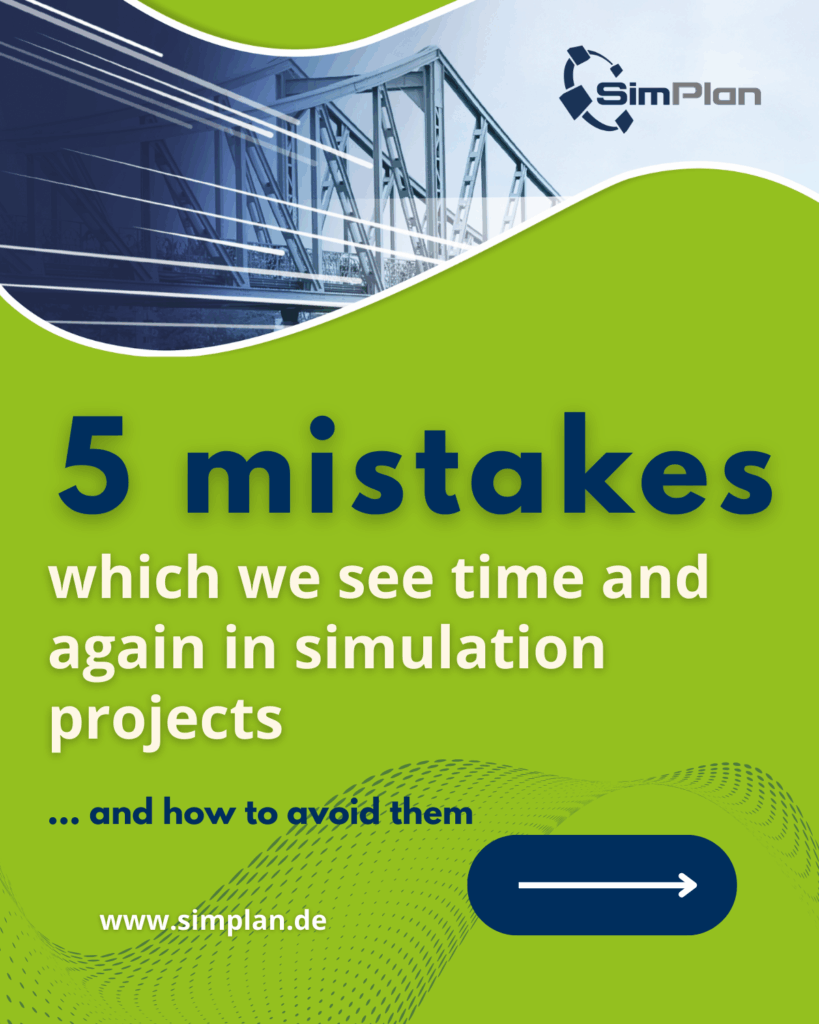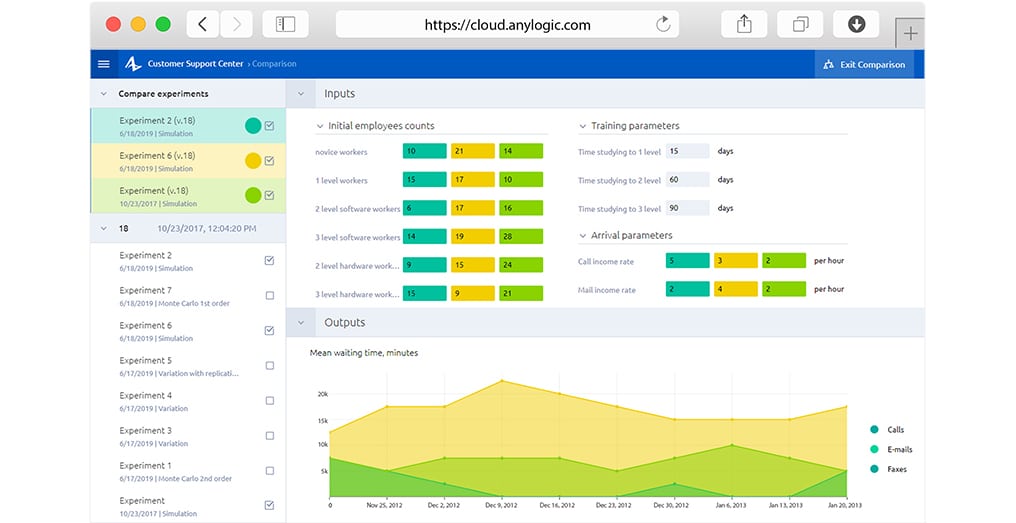How to lay the foundations for successful models and better decisions
Simulation is a powerful tool for analysing and optimising processes – but in practice, projects often fail due to typical pitfalls. The good news is that if you know what these are, you can avoid them. Based on our many years of project experience with SimPlan, we will show you five classic mistakes that we encounter time and time again – and how you can avoid them.
1. Unclear goal definition: ‘Just simulate it’ is not enough
Companies often start with the desire to ‘do something with simulation’ without having a specific goal in mind. But without a clear question, a simulation model is hardly useful.
Example
‘We want to know if our new layout is efficient’ is too vague. Better would be: ‘How does an additional intermediate storage facility affect throughput time?’
Tip: Formulate measurable goals – e.g. reducing throughput times, minimising inventories or securing an investment.
2. Starting too late: Simulation often only comes into play when things are already burning
Many projects only incorporate simulation late in the planning process – shortly before construction begins or commissioning takes place. This leaves little time for modelling, validation or scenario comparison.
The result
Only an analysis of the status quo remains – genuine optimisation is no longer possible.
Tip Start early – ideally in parallel with concept development. Simulation can provide valuable decision-making support even at the design stage.
3. Missing or unusable data: the Achilles heel of many models
A common misconception is that ‘we already have the data.’ In reality, however, this data is often outdated, incomplete or inconsistent. Without reliable data, the model is of little value.
Practical example
Incorrect cycle times or undocumented relocations lead to misleading results – and to wrong decisions.
Tip: Allow time and resources for data preparation – or get support. Structured data analysis is particularly worthwhile for ERP or MES connections.
4. Specialist departments are not involved
Simulation models are often developed in isolation by the project team or by external service providers – without feedback from the departments involved. This is wasted potential.
Consequence
Valuable practical knowledge from production, logistics or maintenance remains unused.
Tip: Involve the relevant departments from the outset. Simulation thrives on interdisciplinary exchange – this is the only way to ensure that the model is realistic and accepted.
5. Model with no relevance to practice
A simulation model can be technically perfect and visually impressive – and still not contribute to the decision-making process. In that case, all the effort was wasted.
Typical problem:
Too many details that are irrelevant to the issue at hand – or results that cannot be integrated into existing decision-making processes.
Tip: Consistently align the model structure, complexity and evaluation with the defined benefits rather than with technical possibilities.
Simulation is not an end in itself – it is a decision-making tool
Simulation projects rarely fail because of the software, but mostly because of the approach. If you plan clear goals, a clean database and the right people, you will create real added value.
Whether for material flow, layout planning or virtual commissioning: simulation helps you make better decisions – faster, more transparently and on a more sound basis.
Would you like to find out more?
We support you in planning and implementing successful simulation projects – from the initial workshop to the final decision-making basis.




